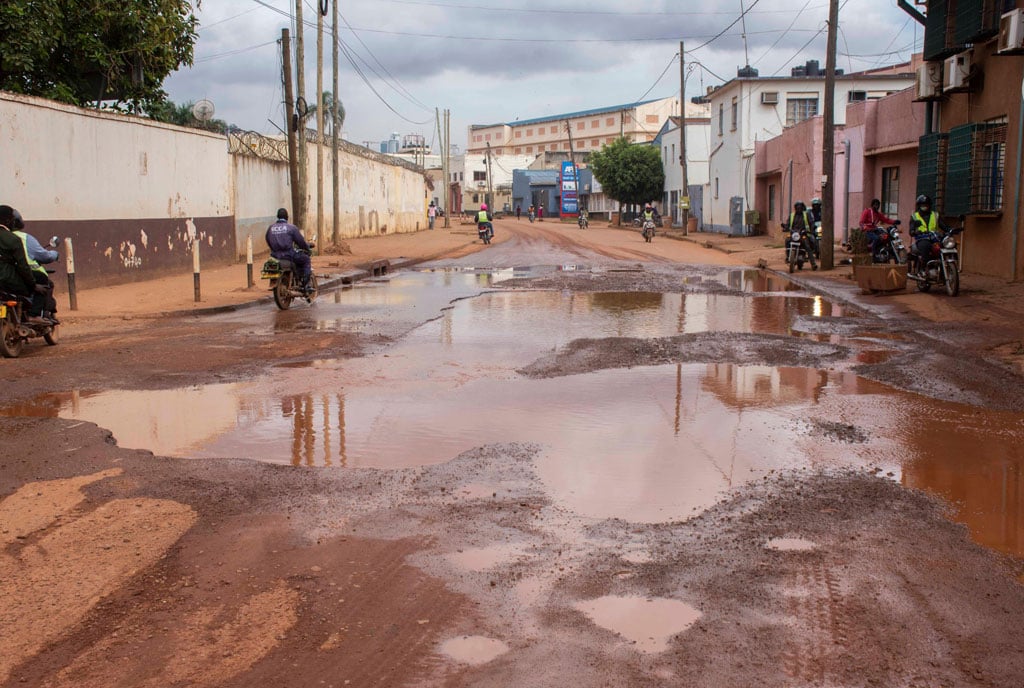It is either mud or dust

A muddy potholed street in Kampala. PHOTO/FILE
What you need to know:
- For in the dichotomy of mud and dust that defines our roads, there lies an opportunity for renewal and transformation—a chance to build a better tomorrow for generations to come.
In the heart of East Africa lies a paradoxical tale of two terrains, where the ground beneath your wheels dictates your destiny: either you’re stuck in the muck or dancing through the haze of dust. Uganda, a land of remarkable beauty and resilient people, finds itself ensnared in a relentless struggle against the very arteries meant to connect its bustling communities.
From the bustling streets of Najjera to the industrial juggernaut of the Industrial Area, the narrative remains the same: the roads, once promised paths of progress, now stand as monuments to neglect and frustration.
Picture this: a journey through Najjera, a burgeoning suburb pulsating with life and ambition. Yet, as one navigates its labyrinthine streets, the romance of urban expansion fades into a battle against the elements. Here, the roads, once smooth thoroughfares, now resemble an obstacle course of potholes and craters. Each bump and jolt serves as a grim reminder of the infrastructure’s decay, a testament to the indifference of those tasked with its upkeep.
But Najjera is merely a microcosm of a larger affliction plaguing Uganda’s transportation network. Venture further, into the heart of the Industrial Area, where the pulse of commerce beats incessantly.
Here, amidst the hum of factories and the hustle of trade, lies a cruel irony: the very arteries meant to sustain economic growth now choke its progress. Mud-caked thoroughfares impede the flow of goods and the aspirations of countless entrepreneurs, rendering dreams of prosperity mired in the quagmire of neglect.
Yet, the decay of Uganda’s roads is not solely a consequence of neglect; it is also a symptom of a deeper malaise—a disregard for the environment that manifests in the wanton dumping of garbage.
Alongside the potholes and mud pits, one finds rivers of trash snaking their way through the urban landscape, clogging drainage systems and exacerbating the erosion of tarmac roads. The consequences are dire: as rainwater cascades unchecked, it washes away layers of asphalt, leaving behind a scarred and pitted surface that mirrors the scars of indifference etched upon the collective consciousness.
In the face of such challenges, the call to action is clear: let the public do their part. For the fate of Uganda’s roads is not solely the responsibility of policymakers and bureaucrats; it is a shared burden that requires collective action and individual accountability. Let each citizen become a steward of their surroundings, taking pride in the upkeep of their communities and the preservation of their shared infrastructure.
In our journey towards revitalising Uganda’s roads, we must acknowledge the intertwined nature of the challenges we face. The degradation of our infrastructure is not a solitary issue but rather a web of interconnected problems, each exacerbating the other. The dumping of garbage, for instance, is not merely an eyesore but a catalyst for the erosion of our roads.
As trash accumulates in drainage systems, it creates blockages that impede the flow of water, leading to flooding and subsequent damage to tarmac surfaces. What begins as a casual disregard for waste disposal thus snowballs into a full-blown crisis, leaving our roads scarred and our communities stranded.
To address this multifaceted challenge, a comprehensive approach is needed—one that combines infrastructure investment with public awareness and engagement. While government intervention is essential in providing the necessary resources and expertise, the onus is also on each citizen to play their part in preserving our roads. Simple actions, such as proper waste disposal and vigilant maintenance of drainage systems, can go a long way in mitigating the impact of garbage on our infrastructure.
Furthermore, education and advocacy are vital tools in fostering a culture of environmental stewardship. By raising awareness about the consequences of irresponsible waste disposal and the importance of maintaining our roads, we can inspire a sense of ownership and pride in our communities. Through community clean-up initiatives and grassroots campaigns, we can empower individuals to take control of their surroundings and become agents of positive change.
Moreover, collaboration between government agencies, private sector stakeholders, and civil society organisations is crucial in implementing sustainable solutions. By pooling resources and expertise, we can develop innovative approaches to waste management and infrastructure maintenance that address the root causes of decay. Public-private partnerships, for instance, can facilitate the adoption of advanced technologies for waste recycling and road construction, paving the way for a more resilient and environmentally friendly transportation network.
In conclusion, the challenges facing Uganda’s roads are complex and multifaceted, but they are not insurmountable.
By recognising the interconnected nature of these issues and embracing a collaborative approach to solutions, we can pave a path toward a brighter future for our nation. Let us heed the call to action and work together to reclaim the promise of Uganda’s roads as symbols of progress and prosperity.
For in the dichotomy of mud and dust that defines our roads, there lies an opportunity for renewal and transformation—a chance to build a better tomorrow for generations to come.
Simon Okore, the country man




